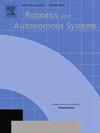Learning latent causal factors from the intricate sensor feedback of contact-rich robotic assembly tasks
IF 5.2
2区 计算机科学
Q1 AUTOMATION & CONTROL SYSTEMS
引用次数: 0
Abstract
Achieving precise robotic assembly is paramount for safety and performance in industrial settings. Conventional assembly methods require tedious manual adjustment of many parameters, and it is challenging to meet the assembly requirements with tight clearance. Robot learning has been at the forefront of research, showing potential for automation and intelligence in robotic operations. However, intricate information such as force feedback is indispensable for high-precision robot assembly tasks, and current learning methods grapple with processing this complex observation data due to discontinuous force changes during operation and the inherent noise from the force sensor. To enhance learning efficiency amidst challenging observations, this paper proposes introducing the concept of latent causal factors that drive sensor observations and hold paramount significance in assembly tasks. This paper analyses the impact of discontinuous and noisy observations and offers two ways to infer causal factors. Based on the implied latent factors, we propose a method that learns high-precision assembly policies from interacting with the environment. The algorithm’s performance is evaluated in simulated and real-world nut insertion environments, demonstrating significant improvements over the previous methods. This research also underscores the promise of causal inference in addressing industrial challenges.
从接触丰富的机器人装配任务的复杂传感器反馈中学习潜在因果因素
在工业环境中,实现精确的机器人装配对安全和性能至关重要。传统的装配方法需要对许多参数进行繁琐的手动调整,而且要在间隙很小的情况下满足装配要求具有挑战性。机器人学习一直处于研究前沿,显示出机器人操作自动化和智能化的潜力。然而,力反馈等复杂信息是高精度机器人装配任务中不可或缺的,由于操作过程中力的不连续变化以及力传感器固有的噪声,目前的学习方法在处理这些复杂的观察数据时困难重重。为了在具有挑战性的观测中提高学习效率,本文提出引入潜在因果因素的概念,这些因果因素驱动着传感器的观测,在装配任务中具有极其重要的意义。本文分析了不连续和噪声观测的影响,并提供了两种推断因果因素的方法。基于隐含的潜在因素,我们提出了一种从与环境的交互中学习高精度装配策略的方法。我们在模拟和真实的螺母插入环境中对该算法的性能进行了评估,结果表明它比以前的方法有了显著的改进。这项研究还强调了因果推理在应对工业挑战方面的前景。
本文章由计算机程序翻译,如有差异,请以英文原文为准。
求助全文
约1分钟内获得全文
求助全文
来源期刊

Robotics and Autonomous Systems
工程技术-机器人学
CiteScore
9.00
自引率
7.00%
发文量
164
审稿时长
4.5 months
期刊介绍:
Robotics and Autonomous Systems will carry articles describing fundamental developments in the field of robotics, with special emphasis on autonomous systems. An important goal of this journal is to extend the state of the art in both symbolic and sensory based robot control and learning in the context of autonomous systems.
Robotics and Autonomous Systems will carry articles on the theoretical, computational and experimental aspects of autonomous systems, or modules of such systems.
 求助内容:
求助内容: 应助结果提醒方式:
应助结果提醒方式:


